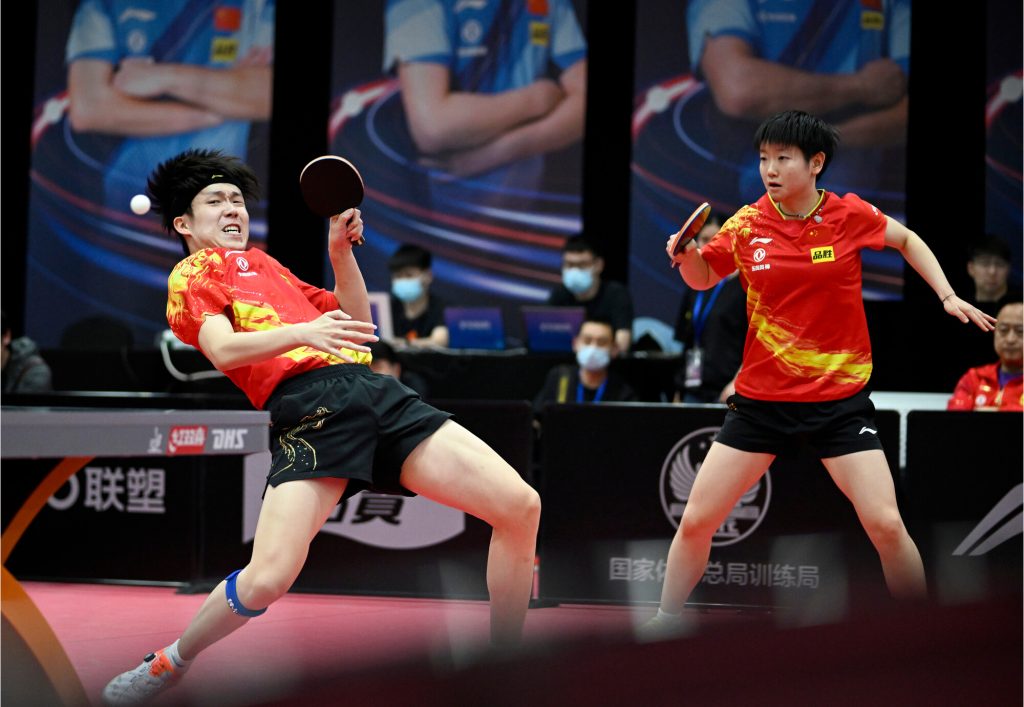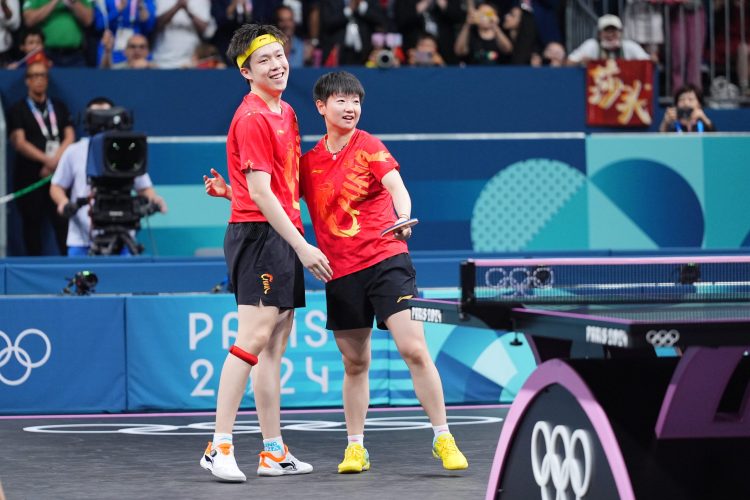Table tennis, once a sport that relied heavily on tactical finesse and patience, has evolved over the years into a fast-paced and physically demanding game. Today, the balance between speed and precision is one of the key factors that determines success at the highest levels. As players strive to perfect their game, they must navigate the fine line between explosive speed and pinpoint accuracy, each with its own set of advantages and challenges.
In this article, we’ll explore how the balance between speed and precision has shaped the modern table tennis game, how it affects the strategies employed by the top players, and which athletes are most adept at mastering this delicate equilibrium. We’ll also look at how this balance influences different aspects of the game, from serving and rallying to defense and offense, and identify which players have the skills to gain the upper hand in this dynamic environment.
1. The Evolution of Speed and Precision in Table Tennis
A. Speed: The Modern Era of Fast and Aggressive Play
In recent years, speed has become a defining feature of professional table tennis. With the advancements in equipment, specifically the development of high-quality rubbers and faster-playing tables, players are able to generate faster ball speeds than ever before. The combination of quicker footwork, lightning-fast reflexes, and intense power has changed the way the game is played.
- Offensive Speed: Players today can execute blistering forehand loops, backhand counter-hits, and smashes that approach the speed of a bullet. The rally speed has dramatically increased, and top-level players are required to react to balls traveling at over 100 km/h (62 mph). This has made table tennis a game of explosiveness, where quick reflexes and the ability to execute powerful shots from all positions on the table are paramount.
- Defensive Speed: On the defensive side, the speed of play has forced players to adapt their techniques as well. Chopping, blocking, and countering are all executed faster than ever. Players need to recover quickly, anticipate shots, and maintain a high level of footwork agility to keep up with their opponents.
- Impact on Serving: Serving has also evolved into a fast, dynamic aspect of the game. Players have become adept at using short, fast serves that are designed to rush their opponents and disrupt their rhythm. The introduction of side-spin and under-spin on serves has made it even harder for the receiving player to anticipate and return the ball effectively.
B. Precision: The Subtle Art of Accuracy
Despite the increasing speed of the game, precision remains an essential aspect of table tennis. It’s not enough to just hit the ball hard or fast; players must be able to place their shots with incredible accuracy, ensuring they hit the right targets on the table while minimizing mistakes.
- Placement and Angles: Precision in table tennis refers to the ability to place the ball perfectly. Whether it’s a topspin or backspin shot, placing the ball on the sidelines, deep corners, or just over the net can break an opponent’s rhythm and force errors. The ability to hit precise angles and create wide margins gives a player the edge in dictating the flow of the rally.
- Spin Control: One of the most critical components of precision is spin control. The ability to generate different spins—such as side-spin, backspin, and topspin—and control the amount of spin can make all the difference. Ma Long, for example, is renowned for his mastery of topspin combined with precise shot placement, allowing him to dictate rallies from both forehand and backhand.
- Mental Precision: Mental accuracy is just as vital as physical precision. The ability to make quick, correct decisions about shot selection, anticipating an opponent’s next move, and adjusting to different playing styles requires mental clarity. This is especially true in high-pressure situations, such as match points or tie-breaks.
2. The Balance Between Speed and Precision: Which Aspect Should Take Priority?
In the current landscape of table tennis, the balance between speed and precision is not merely a theoretical concept—it has become a strategic choice that players must make. Both elements have their advantages and trade-offs, and understanding when to focus on one over the other is a critical skill.
A. The Case for Speed
- High-Octane Offense: The modern table tennis player must be prepared to execute fast attacks, especially when the ball is moving at rapid speeds. Fast offensive play allows players to set the tempo of the match and put pressure on their opponents by shortening the length of rallies. Players like Fan Zhendong and Lin Gaoyuan are known for their ability to force aggressive rallies, often ending points with smashing speed.
- Fast Reflexes in Defense: In high-speed rallies, the ability to react instantly to your opponent’s shots becomes crucial. Defenders like Xu Xin and Zhang Jike have made a name for themselves with their quick reflexes, transitioning from defense to offense in the blink of an eye. These players use their speed to anticipate and return fast shots, keeping opponents off balance.
- Dominating with Fast Serves: As mentioned earlier, the speed of serves has increased, making it vital to execute rapid, tricky serves that can overpower or confuse the opponent. A fast serve can generate an easy point or set up a player for an attacking return, forcing the opponent into a defensive position right away.
B. The Case for Precision
- Targeting Weaknesses: Precision allows players to exploit their opponent’s weaknesses. By placing shots in the corners, down the lines, or targeting areas where the opponent is less comfortable, precision can open up opportunities for scoring or forcing errors. This is particularly important against opponents with powerful speed but questionable accuracy.
- Shot Variety and Control: A precise player doesn’t rely solely on speed but can mix up their game with a combination of spin, placement, and tempo changes. This unpredictability keeps the opponent on edge, preventing them from setting up their own attacks. Precision allows players to choose the right time to unleash power, making them harder to read.
- Consistency and Patience: Players who emphasize precision tend to have a steady and consistent approach, focusing on long-term endurance. While they may not dominate with the same speed as others, their ability to place each shot with care increases their chances of winning rallies over time, especially when the match goes into deeper sets.

3. Who Can Gain the Upper Hand in the Current Era of Speed and Precision?
As the balance between speed and precision continues to shape the current era of table tennis, it’s clear that some players are better equipped to handle this combination of attributes. Let’s look at a few players who excel in this balance and are capable of dominating the game in both speed and precision.
A. Ma Long: Master of Precision and Power
Ma Long, widely regarded as one of the greatest table tennis players of all time, is a perfect example of a player who balances both speed and precision. While his game is built around speed—especially his explosive forehand loops—he’s equally known for his precise shot placement and ability to read the game. His combination of powerful spins, control over angles, and mental precision gives him a distinct advantage in long rallies and tight situations.
B. Fan Zhendong: A Speed Demon with Tactical Precision
Fan Zhendong, currently one of the top players in the world, relies heavily on his speed to dominate his opponents. His forehand is among the most powerful in the game, but his tactical awareness allows him to place the ball precisely at the right moment. He excels at dictating the pace of the match with his aggressive offensive game while maintaining the accuracy necessary to exploit his opponent’s weaknesses.
C. Xu Xin: Speed in Defense, Precision in Attack
As one of the top defenders in table tennis, Xu Xin has mastered the art of defensive speed, using his quick reflexes to return fast, aggressive shots. But what sets him apart is his ability to transition from defense to attack, using precise placement to turn the tide of a rally. His unique ability to combine defensive speed with offensive precision has made him one of the most unpredictable and difficult players to face.
D. Mima Ito: The Precision of Japan’s Rising Star
On the women’s side, Mima Ito stands out for her remarkable precise control over both her backhand and forehand. While she isn’t known for explosive speed like some of her counterparts, her ability to place the ball with sharp angles and vary her spin gives her an edge over players who rely heavily on power. Her balance between technical precision and the occasional burst of speed allows her to outmaneuver opponents in tight situations.
4. Conclusion: The Never-Ending Dance Between Speed and Precision
In the modern era of table tennis, the battle between speed and precision is an ongoing process of evolution. While speed allows players to control the tempo and apply pressure, precision ensures that they can maintain consistency, place shots strategically, and manage rallies over time. The true champions are those who can balance these two elements, adjusting their approach based on the situation and opponent.
As the sport continues to evolve, players will need to master both aspects to stay competitive at the highest level. The future of table tennis will likely be defined by athleteswho can integrate speed with tactical precision, creating a thrilling and dynamic game that leaves fans on the edge of their seats.


































Discussion about this post